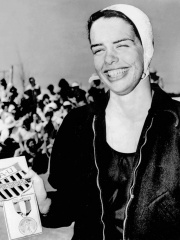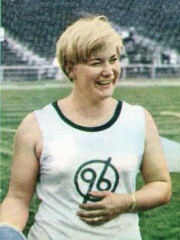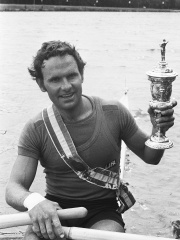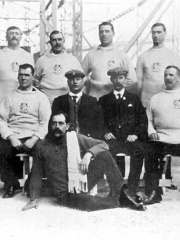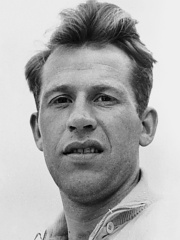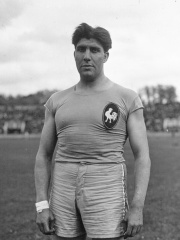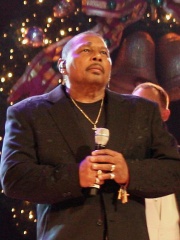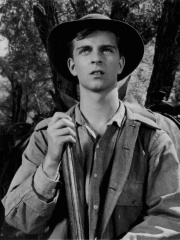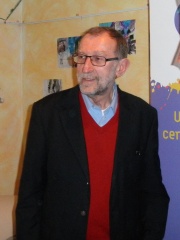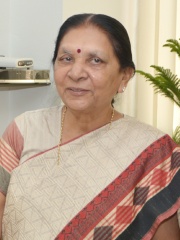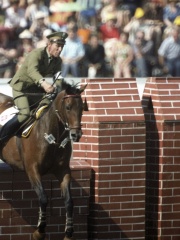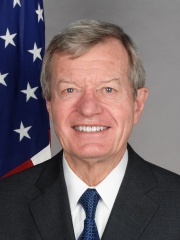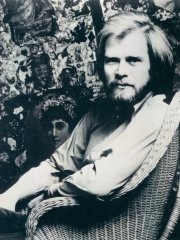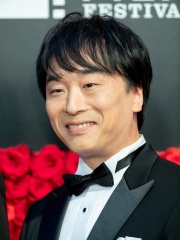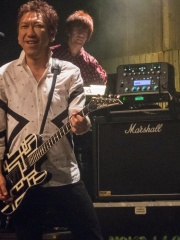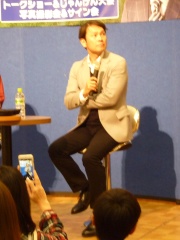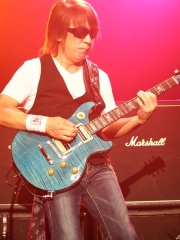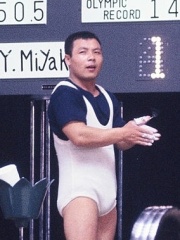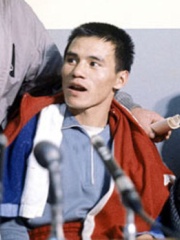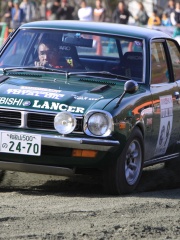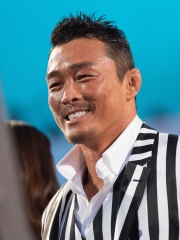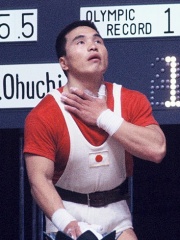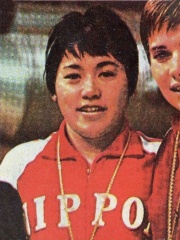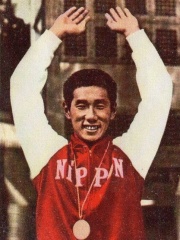ATHLETE
Kim Eui-tae
1941 - Today

 Kim Eui-tae
Kim Eui-tae
Kim Eui-Tae (Korean: 김의태, born 2 June 1941) is a South Korean former judoka who competed in the 1964 Summer Olympics (–80 kg) and in the 1972 Summer Olympics (–93 kg and open category). Read more on Wikipedia
His biography is available in 16 different languages on Wikipedia. Kim Eui-tae is the 1,912th most popular athlete (down from 1,421st in 2024), the 1,778th most popular biography from Japan (down from 1,519th in 2019) and the 30th most popular Japanese Athlete.
Memorability Metrics
Page views of Kim Eui-tae by language
Among ATHLETES
Among athletes, Kim Eui-tae ranks 1,912 out of 6,025. Before him are Marilee Stepan, Liesel Westermann, Christiane Krause, Willard Rice, Alf Hansen, and Munyoro Nyamau. After him are Vyacheslav Lemeshev, Grete Ingeborg Nykkelmo, John James Shepherd, Olle Larsson, Raoul Paoli, and Josef Horešovský.
Most Popular Athletes in Wikipedia
Go to all RankingsMarilee Stepan
1935 - 2021
HPI: 52.35
Rank: 1,906
Liesel Westermann
1944 - Present
HPI: 52.35
Rank: 1,907
Christiane Krause
1950 - Present
HPI: 52.34
Rank: 1,908
Willard Rice
1895 - 1967
HPI: 52.34
Rank: 1,909
Alf Hansen
1948 - Present
HPI: 52.33
Rank: 1,910
Munyoro Nyamau
1942 - 2025
HPI: 52.33
Rank: 1,911
Kim Eui-tae
1941 - Present
HPI: 52.33
Rank: 1,912
Vyacheslav Lemeshev
1952 - 1996
HPI: 52.32
Rank: 1,913
Grete Ingeborg Nykkelmo
1961 - Present
HPI: 52.31
Rank: 1,914
John James Shepherd
1884 - 1954
HPI: 52.31
Rank: 1,915
Olle Larsson
1928 - 1960
HPI: 52.31
Rank: 1,916
Raoul Paoli
1887 - 1960
HPI: 52.30
Rank: 1,917
Josef Horešovský
1946 - Present
HPI: 52.30
Rank: 1,918
Contemporaries
Among people born in 1941, Kim Eui-tae ranks 566. Before him are John C. Malone, Aaron Neville, Tommy Rettig, Juan Olivares, Miroslav Verner, and Javier Vargas. After him are Irma Thomas, Anandiben Patel, Antonina Lazareva, Jan Kowalczyk, Max Baucus, and Long John Baldry.
Others Born in 1941
Go to all RankingsJohn C. Malone
BUSINESSPERSON
1941 - Present
HPI: 52.58
Rank: 560
Aaron Neville
SINGER
1941 - Present
HPI: 52.47
Rank: 561
Tommy Rettig
ACTOR
1941 - 1996
HPI: 52.40
Rank: 562
Juan Olivares
SOCCER PLAYER
1941 - Present
HPI: 52.37
Rank: 563
Miroslav Verner
ARCHAEOLOGIST
1941 - Present
HPI: 52.36
Rank: 564
Javier Vargas
SOCCER PLAYER
1941 - Present
HPI: 52.34
Rank: 565
Kim Eui-tae
ATHLETE
1941 - Present
HPI: 52.33
Rank: 566
Irma Thomas
SINGER
1941 - Present
HPI: 52.29
Rank: 567
Anandiben Patel
POLITICIAN
1941 - Present
HPI: 52.13
Rank: 568
Antonina Lazareva
ATHLETE
1941 - Present
HPI: 52.11
Rank: 569
Jan Kowalczyk
ATHLETE
1941 - 2020
HPI: 52.03
Rank: 570
Max Baucus
POLITICIAN
1941 - Present
HPI: 51.99
Rank: 571
Long John Baldry
SINGER
1941 - 2005
HPI: 51.91
Rank: 572
In Japan
Among people born in Japan, Kim Eui-tae ranks 1,778 out of 6,245. Before him are Shunya Ando (1991), Tomokazu Seki (1972), Akira Ishigame (1985), Tomoyasu Hotei (1962), Mutsuhiko Nomura (1940), and Koichi Higashi (1978). After him are Yusuke Suzuki (1982), Masahiro Fukuda (1966), Tak Matsumoto (1961), Osamu Taninaka (1964), Shinji Ono (1979), and Hisanori Shirasawa (1964).
Others born in Japan
Go to all RankingsShunya Ando
SOCCER PLAYER
1991 - Present
HPI: 52.37
Rank: 1,772
Tomokazu Seki
ACTOR
1972 - Present
HPI: 52.37
Rank: 1,773
Akira Ishigame
SOCCER PLAYER
1985 - Present
HPI: 52.36
Rank: 1,774
Tomoyasu Hotei
MUSICIAN
1962 - Present
HPI: 52.36
Rank: 1,775
Mutsuhiko Nomura
SOCCER PLAYER
1940 - Present
HPI: 52.36
Rank: 1,776
Koichi Higashi
SOCCER PLAYER
1978 - Present
HPI: 52.33
Rank: 1,777
Kim Eui-tae
ATHLETE
1941 - Present
HPI: 52.33
Rank: 1,778
Yusuke Suzuki
SOCCER PLAYER
1982 - Present
HPI: 52.30
Rank: 1,779
Masahiro Fukuda
SOCCER PLAYER
1966 - Present
HPI: 52.29
Rank: 1,780
Tak Matsumoto
SINGER
1961 - Present
HPI: 52.29
Rank: 1,781
Osamu Taninaka
SOCCER PLAYER
1964 - Present
HPI: 52.28
Rank: 1,782
Shinji Ono
SOCCER PLAYER
1979 - Present
HPI: 52.26
Rank: 1,783
Hisanori Shirasawa
SOCCER PLAYER
1964 - Present
HPI: 52.25
Rank: 1,784
Among ATHLETES In Japan
Among athletes born in Japan, Kim Eui-tae ranks 30. Before him are Naohiro Ikeda (1940), Yoshinobu Miyake (1939), Takao Sakurai (1941), Haruki Uemura (1951), Kenjiro Shinozuka (1948), and Yoshihiro Akiyama (1975). After him are Masushi Ouchi (1943), Shunkichi Hamada (1910), Mayumi Aoki (1953), Toru Goto (1934), Shinji Hosokawa (1960), and Nobutaka Taguchi (1951).
Naohiro Ikeda
1940 - 2021
HPI: 53.50
Rank: 24
Yoshinobu Miyake
1939 - Present
HPI: 53.31
Rank: 25
Takao Sakurai
1941 - 2012
HPI: 53.26
Rank: 26
Haruki Uemura
1951 - Present
HPI: 52.81
Rank: 27
Kenjiro Shinozuka
1948 - 2024
HPI: 52.65
Rank: 28
Yoshihiro Akiyama
1975 - Present
HPI: 52.38
Rank: 29
Kim Eui-tae
1941 - Present
HPI: 52.33
Rank: 30
Masushi Ouchi
1943 - 2011
HPI: 52.14
Rank: 31
Shunkichi Hamada
1910 - 2009
HPI: 51.99
Rank: 32
Mayumi Aoki
1953 - Present
HPI: 51.98
Rank: 33
Toru Goto
1934 - Present
HPI: 51.83
Rank: 34
Shinji Hosokawa
1960 - Present
HPI: 51.45
Rank: 35
Nobutaka Taguchi
1951 - Present
HPI: 51.45
Rank: 36
